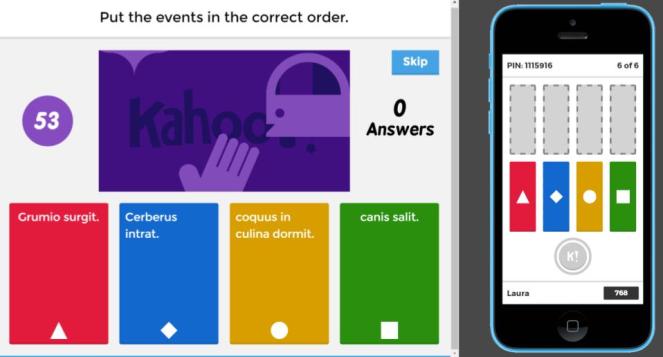As you probably know, Kahoot is incredibly popular with students. I had no idea what it was when I started teaching, but I use it on a semi-regular basis now, usually for vocabulary. (Here is an example of one of those for CLC Stage 6.)
Kahoot recently introduced a new type of quiz: Jumble. With Kahoot Jumble, students reorganize blocks, which can contain words, events, etc., into the correct order. Truth be told, I think this feature has limited use as a standalone quiz. For real functionality, I think the Kahoot team should allow you to create quizzes with multiple types of questions: Jumble, multiple-choice, and whatever else is on the horizon. But that’s not the point of this post. 🙂
I can see Jumble being a great way to do post-reading with Latin students, and I think this is something that Latin teachers of all pedagogical stripes (CI, grammar/translation, hybrid – which is kind of what I am) can use.
There are two main things I foresee myself doing with Kahoot Jumble questions: put the words in the sentence in the correct order, and put the events in the correct order. I did this in the quick Jumble I threw together to get comfortable with how the whole thing works. That Jumble is for the Stage 1 story “Cerberus.”
Here are some screenshots of the quiz:


Ultimately, I think option #2 (put the events in order) is more useful for us as teachers and for our students’ interaction with the text. Option #1 works well for that very first stage of CLC, if that’s what you’re using, when the sentences are four words long. Option #2, however, lets you assess students’ comprehension of the text. For those of you out there who are reading novellas (I see you on Twitter, amici et amicae!), this could be a great ten-minute activity for post-reading of a passage.
The big con here is that, as far as I can tell, you are limited to four boxes of text, and those boxes of text have a character limit. This might not even be a con for many of us – it might just be a way to make us more “creative” in the ways we ask students to think about the text.